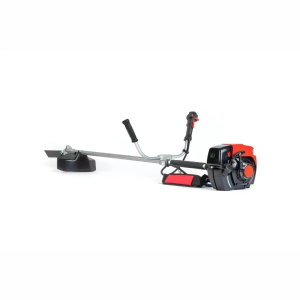Because their products are solid, convenient for packaging, transportation, and storage, solvent-free, pollution-free, and non-toxic, hot-melt adhesives are preferred. Additionally, the production process for hot-melt adhesives is straightforward, and the adhesives' added value, bonding strength, and application speed are all superior. You were informed by the manufacturer of the hot melt adhesive that there are three potential causes for the bubbles that can be found in the hot melt adhesive.

The first possibility is that it originally contained moisture, but that moisture was evaporated in a high temperature environment before being combined with the glue. It is difficult for the gas to float to the surface and release itself due to the relative thickness of the glue; the second possibility is that there is some mixing that takes place before using hot melt adhesive. Other chemical components, the latter of which reacted with the hot melt adhesive that is currently being used, resulting in the release of a certain gas; the third possibility: the amount of glue in the sol box is insufficient, and air enters the delivery port together with the glue; the glue flows out together with the air.
The following strategies can be utilized to rectify the situation in the event that air bubbles have been caused by any of the aforementioned three factors. Find out why there is moisture in the glue by determining whether it is due to the high humidity in the sol box or whether the hot melt adhesive itself has moisture. The glue has moisture; find out why there is moisture in the glue. First the sol box needs to be dried out if it has a significant amount of moisture in it, and then the hot melt glue can be applied. Before using the hot melt adhesive, it must first be dried hot melt adhesive film if there is any moisture present on the surface of the adhesive. It is the responsibility of the supplier to deal with any moisture that may be present in the hot melt adhesive.
The original hot melt adhesive in the sol box needs to be cleaned up before using any other types pes hot melt adhesive film manufacturer of hot melt adhesive; this is done to prevent chemical reactions between hot melt adhesives prepared from different raw materials. Hot melt adhesive reacts with other chemical components.
Is there any sort of introduction that explains the application of low temperature hot melt adhesive as well as its characteristics?.
Low-temperature hot-melt adhesive, high film strength and good toughness, can meet the requirements of heat resistance and cold resistance at the same time, good compatibility with other additives, wide application, can adhere to many substrates with different properties, low melt viscosity, and can cure in a relatively short amount of time. It is convenient to use the glue, and the material that results from shaping low-temperature hot-melt glue has memory elastic properties, is waterproof, and does not deform.
1. Use of an adhesive that eva hot melt adhesive web is melted at a low temperature
The majority of the applications for low-temperature hot-melt adhesive strips include shirts, clothing, clothing accessories, shoemaking, non-woven fabrics, and a variety of other applications.To be more specific, it is utilized in the production of shirt collars, shoulder pads, embroidery, interlining lamination, activated carbon filter cloth, activated carbon filter element, shoe material setting cloth, hot drilling, car carpet, car ceiling and interior parts lamination, leather lamination, heat transfer printing, and other applications.
2. Some characteristics of low-temperature hot melt adhesive (1) Hot-melt adhesive strips for shoulder lining dispensing, shoulder pad lamination, and chest cup lamination: low-temperature hot-melt adhesive strips for shoulder lining dispensing lamination.
This product possesses superior viscosity as well as softness and protection for the environment.It is primarily made up of ethylene-vinyl acetate copolymer, and it possesses excellent bonding strength as well as flexibility. Additionally, it has a low melting temperature, low dosage, low melting point, quick curing speed, is washable, is non-toxic, does not pollute, is transparent, and is simple to use.Widespread applications include non-woven fabric composite, car interior and other chemical fibers, polyester cotton and other fabrics and non-woven fabrics, shoe material cloth composite, leather products, PET film, wood, bamboo charcoal, activated carbon bonding, and other similar applications..
(2) Resin hot-drills require a special adhesive powder for resin drills (hot-melt adhesive strips), which can also be used with acrylic and ABS hot-drills. Powerful, it can be washed, and it cleans well in the dryer.
(3) Hot-melt adhesive strip film is used for aluminum foil composite glass fiber cloth: the hot-melt adhesive strip film for aluminum foil composite glass fiber cloth adopts the common powder-sprinkling composite technology, which forms a fine and thin film after compounding. This film is used for the hot-melt adhesive strip film for aluminum foil composite glass fiber cloth. Aluminum foil and glass fiber cloth are the two most common applications for the hot-melt adhesive powder. composite made of flame-retardant glass fiber cloth, thermal insulation material for heating and cooling equipment pipes, rock wool for building sound-absorbing and sound-insulating materials, outer sheath of ultra-fine glass wool, and packaging materials for export equipment that are moisture-proof, anti-fog, and anti-corrosion.
The aluminum foil glass fiber cloth that has been laminated with the hot-melt adhesive strip has high stiffness, good temperature resistance, strong heat preservation, no solvent evaporation, and satisfies the requirements for environmental protection. Aluminum foil, flame-resistant glass fiber cloth, and adhesive: the layout is as follows:fire rating: flame extension B grade flame dispersion 1 grade.
The ethylene-vinyl acetate copolymer (EVA) that serves as the primary component in hot melt glue stick is combined with a tackifier and a few other components to create the solid adhesive. It bonds quickly, has a high breaking strength, is resistant to aging, and is non-toxic. A film that has good thermal stability as well as other characteristics such as its toughness. Wood, plastic, fiber, fabric, metal, furniture, lampshades, leather, handicraft, toy electronics, electrical components, paper eva hot melt adhesive web products, ceramics, pearl cotton packaging, and other things can all benefit from its utilization. Stable, it has a wide range of applications in both commercial and domestic settings.
The primary components of hot melt glue stick are animal glue, animal glue anticoagulant, fatty acid salt, solvent, and preservative. Hot melt glue stick is a solid form of hot melt glue. In temperatures ranging from -20 degrees Celsius to 40 degrees Celsius, it can be utilized to adhere a variety of papers. After the addition of the synergist, there is an obvious improvement in the sticking performance of the solid adhesive that was prepared. Flocking paintings is one of the many applications for the colored solid glue that can be made by mixing in water-soluble dyes. Other uses include decorating paper and fabric. The animal glue is heated, dissolved (or dispersed), mixed, and then allowed to condense into a solid form to produce the solid glue.






